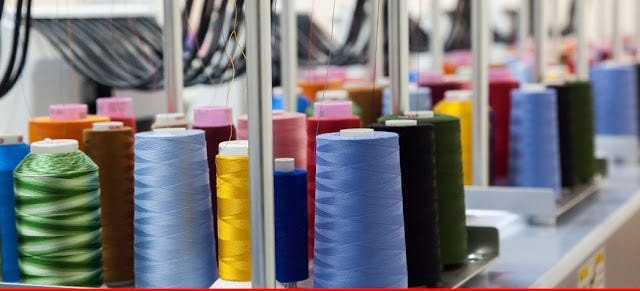The production of cotton yarn and cotton cloth in Pakistan’s textile industry has significantly decreased, observed a total fall of 26% year-over-year.
However, the apparel industry has had phenomenal growth, with clothing output rising by 13% annually in April 2023 and an astonishing 26% annually in the first 11 months of FY2023.
The drop in output of cotton yarn and cotton cloth, two capital-intensive divisions of the textile industry, can be ascribed to a number of factors, according to Nasheed Malik, a textile sector analyst at Topline Securities.

Figure: The production of cotton yarn and cotton cloth in Pakistan’s textile industry has significantly decreased, observed a total fall of 26% year-over-year.
These components, which include mechanized operations like spinning and weaving, heavily rely on equipment and power. This drop is a result of a combination of technological limits, economic difficulties, and price variations in raw materials.
Malik highlighted that Pakistan’s currency underwent two rounds of rupee devaluation against the US dollar in 2018-19 and 2022-23. Again, the apparel industry’s success can be credited to two major factors.
“These devaluations have made Pakistani labor comparatively cheaper, providing a competitive advantage similar to that of Bangladesh,” he added.
Consequently, apparel and garments manufactured in Pakistan have become more cost-effective, attracting increased orders from international buyers.
The All-Pakistan Textile Mills Association (APTMA) has expressed worry over the industry’s high energy prices, which make up between 30 and 40% of manufacturing costs. APTMA has urged that losses and cross-subsidies be excluded from a separate category of power pricing. Lower electricity costs would have a substantial impact on the industry’s entire cost structure and improve its ability to compete.
If this demand is met, textile exports could potentially reach $50 billion by FY2027, compared to the current value of $16.5 billion during FY2023, which reflects a 15% year-on-year decline in the 11-month period.
Recent data for the Large-Scale Manufacturing Index (LSMI) in May 2023 reveals a concerning 14.37% year-on-year decrease. The 11-month period of FY2023 also shows an overall decline of 9.87% year-on-year. This decline can be attributed to various sectors, including textiles, automobiles, food, pharmaceuticals, petroleum products, cement, and tobacco.
The furniture and clothing sectors, which witnessed growth rates of 2.6% and 0.5%, respectively, have made some constructive contributions. The LSMI has demonstrated a promising 5.9% gain month over month.
Pakistan’s declining textile industry and expanding apparel industry serve as a reminder of the necessity for all-encompassing measures to address the sector’s problems. Government officials, business leaders, and politicians must work together to develop creative solutions that boost productivity, cut costs, and boost competitiveness. Pakistan may work to develop a more robust and prosperous manufacturing sector by utilizing the garment industry’s advantages and tackling the challenges it faces.
















